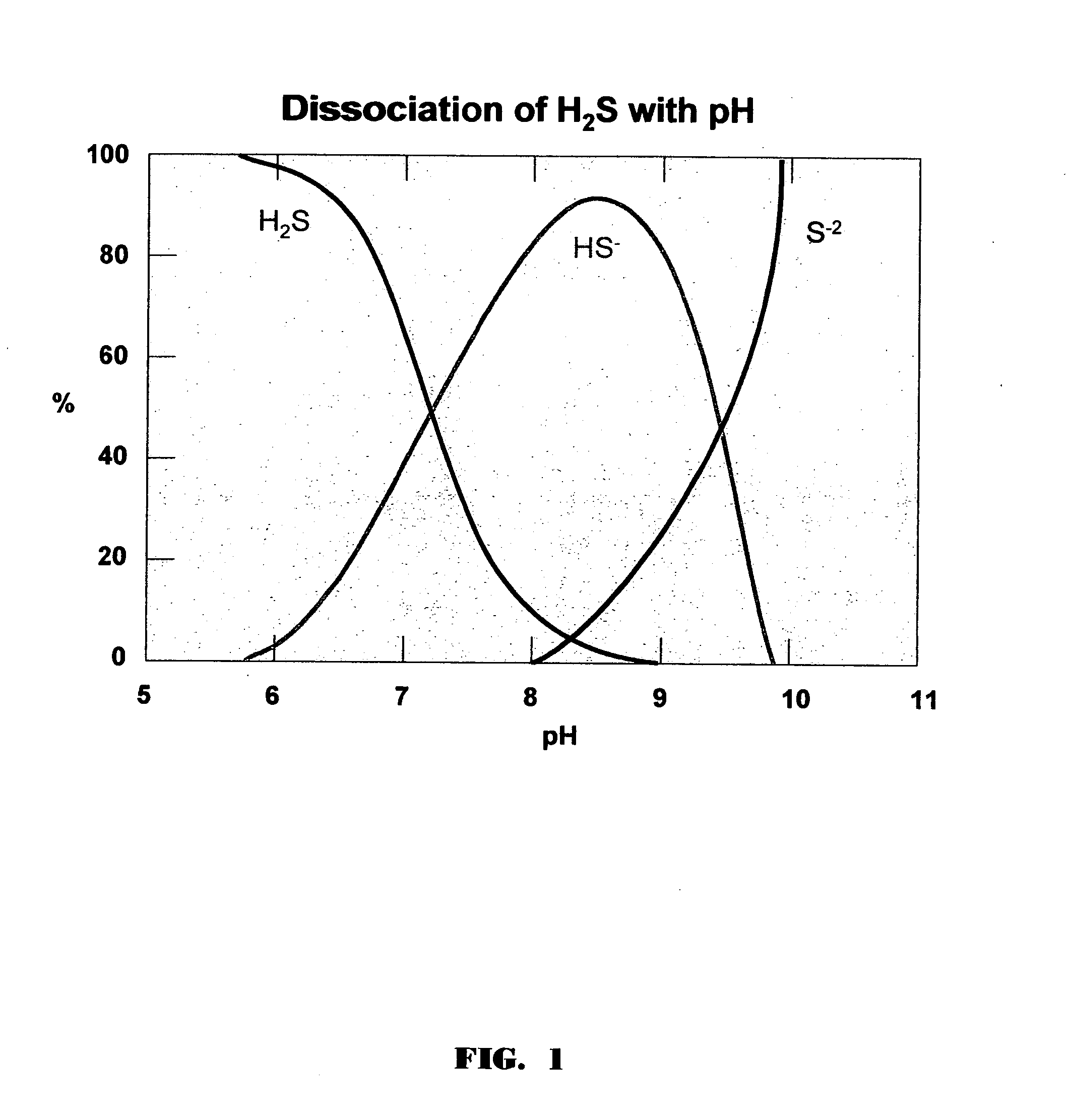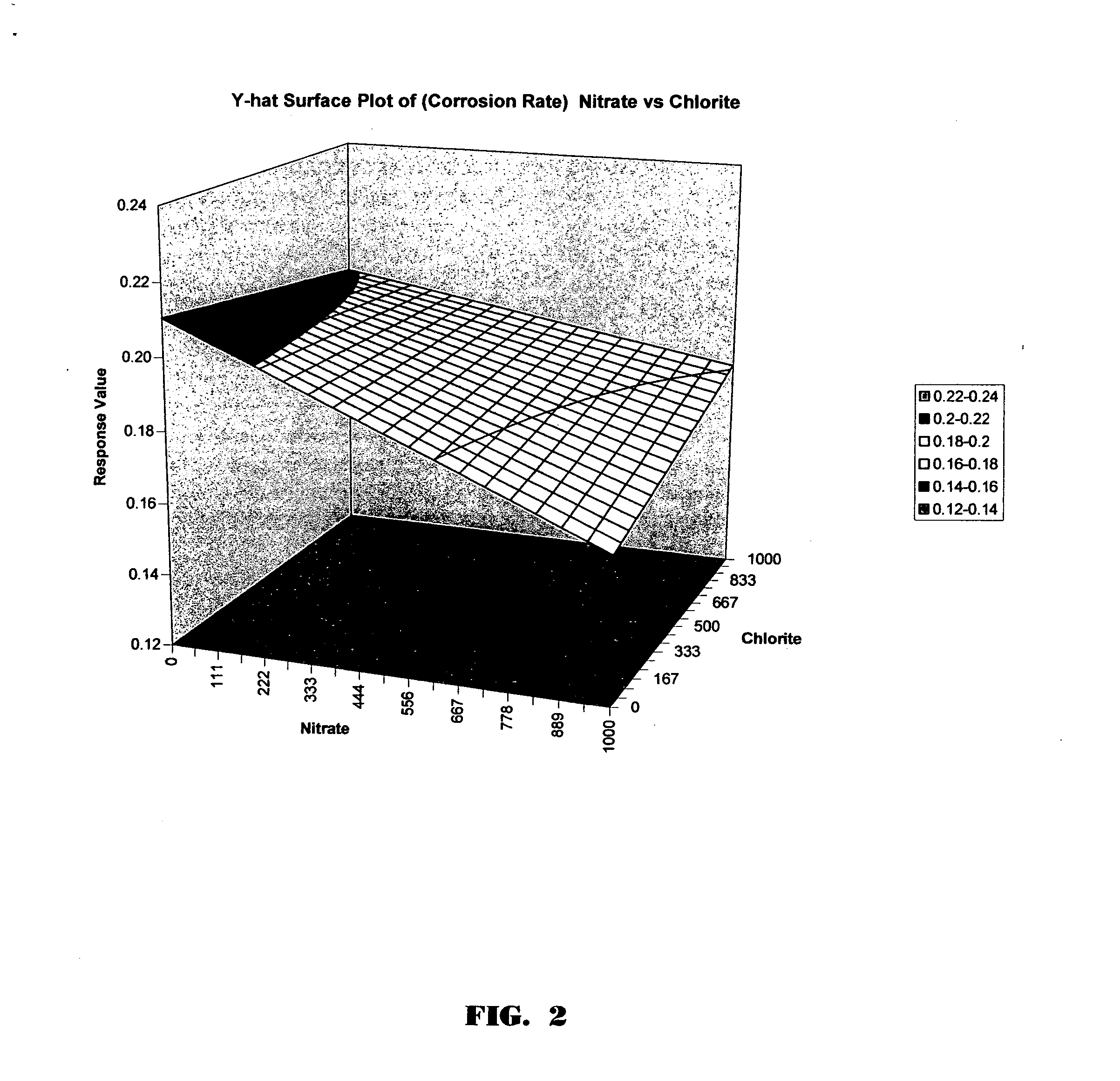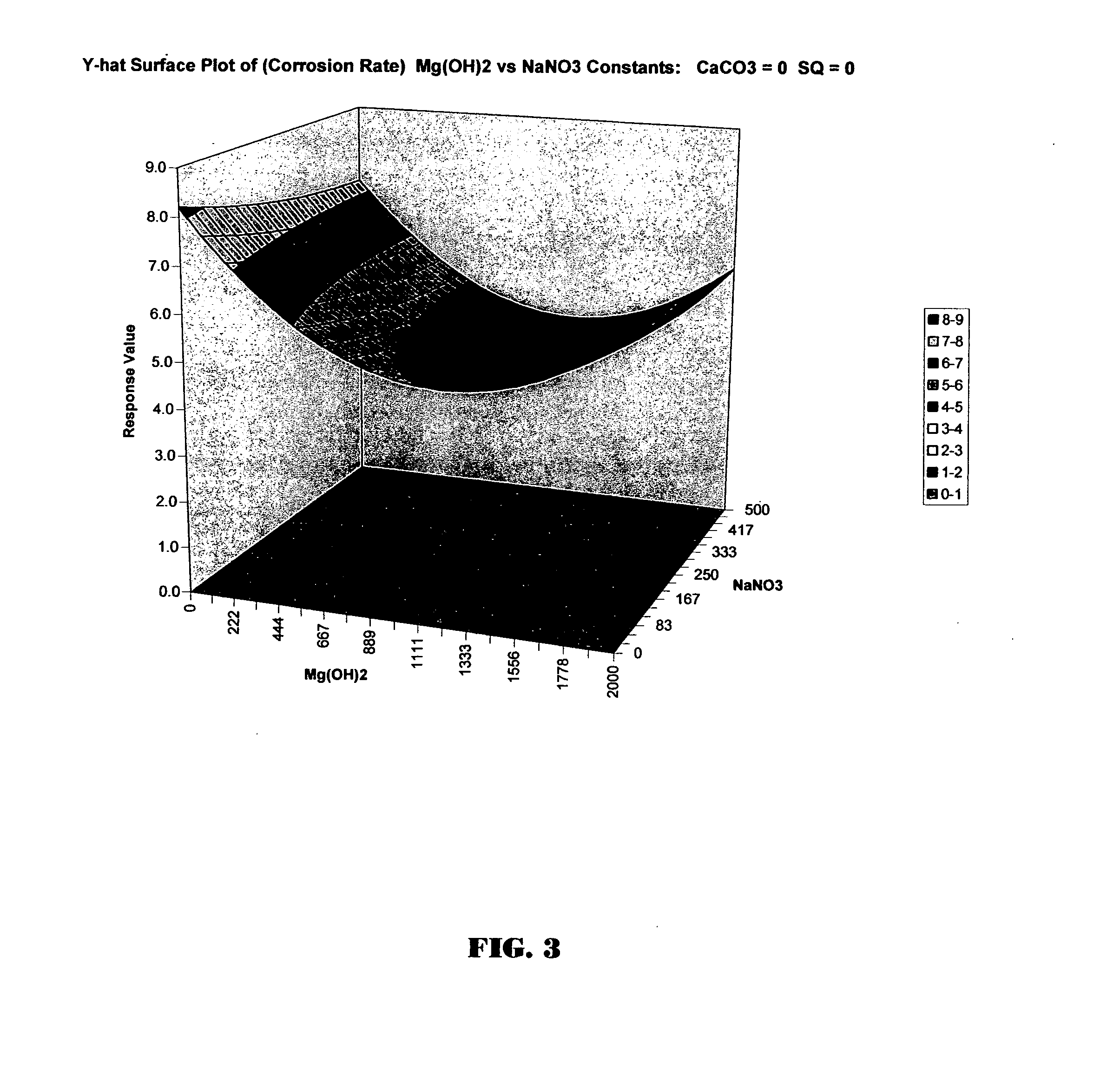Synergistic composition and method for odor control
a composition and composition technology, applied in the direction of water/sewage treatment by neutralisation, water/sewage treatment by oxidation, specific water treatment objectives, etc., to achieve the effect of promoting and enhancing the dewaterability of sludg
- Summary
- Abstract
- Description
- Claims
- Application Information
AI Technical Summary
Benefits of technology
Problems solved by technology
Method used
Image
Examples
Embodiment Construction
[0054] The composition for controlling odor from waste products according to the present invention comprises a combination of a rapid-acting sulfide-consuming material and a longer acting material which elevates and buffers pH >7.5. At this pH range, the solubility of H2S in the aqueous phase is increased substantially, and the growth of sulfide-producing bacteria is inhibited, as shown in Table 2.
TABLE 2Optimum pH Growth Range for SRB (from Yarnell)OptimumYearSourcepH range1993Bergey's Manual of Determinative Bacteriology6.6-7.51946Pomeroy and Bowlus7.5-8.01992Reis, et. al.6.71997Reichenbecher et. al.7.22000Yarnell6.0[0055]Bergey's Manual of Determinative Bacteriology, 9th ed., Williams and Williams, Md., 1994. [0056] Pomeroy R., and Bowlus, F., “Progress Report on Sulfide Control Research,” orks Journal, 18, 597(1946). [0057] Reis, M., Almeida, J., Lemos, P., and Carrondo, M., “Effect of Hydrogen Sulfide on Growth of Sulfate Reducing Bacteria,” Biotechnology and Bioengineering, ...
PUM
| Property | Measurement | Unit |
|---|---|---|
| pH | aaaaa | aaaaa |
| pH | aaaaa | aaaaa |
| weight | aaaaa | aaaaa |
Abstract
Description
Claims
Application Information
 Login to View More
Login to View More - R&D
- Intellectual Property
- Life Sciences
- Materials
- Tech Scout
- Unparalleled Data Quality
- Higher Quality Content
- 60% Fewer Hallucinations
Browse by: Latest US Patents, China's latest patents, Technical Efficacy Thesaurus, Application Domain, Technology Topic, Popular Technical Reports.
© 2025 PatSnap. All rights reserved.Legal|Privacy policy|Modern Slavery Act Transparency Statement|Sitemap|About US| Contact US: help@patsnap.com



